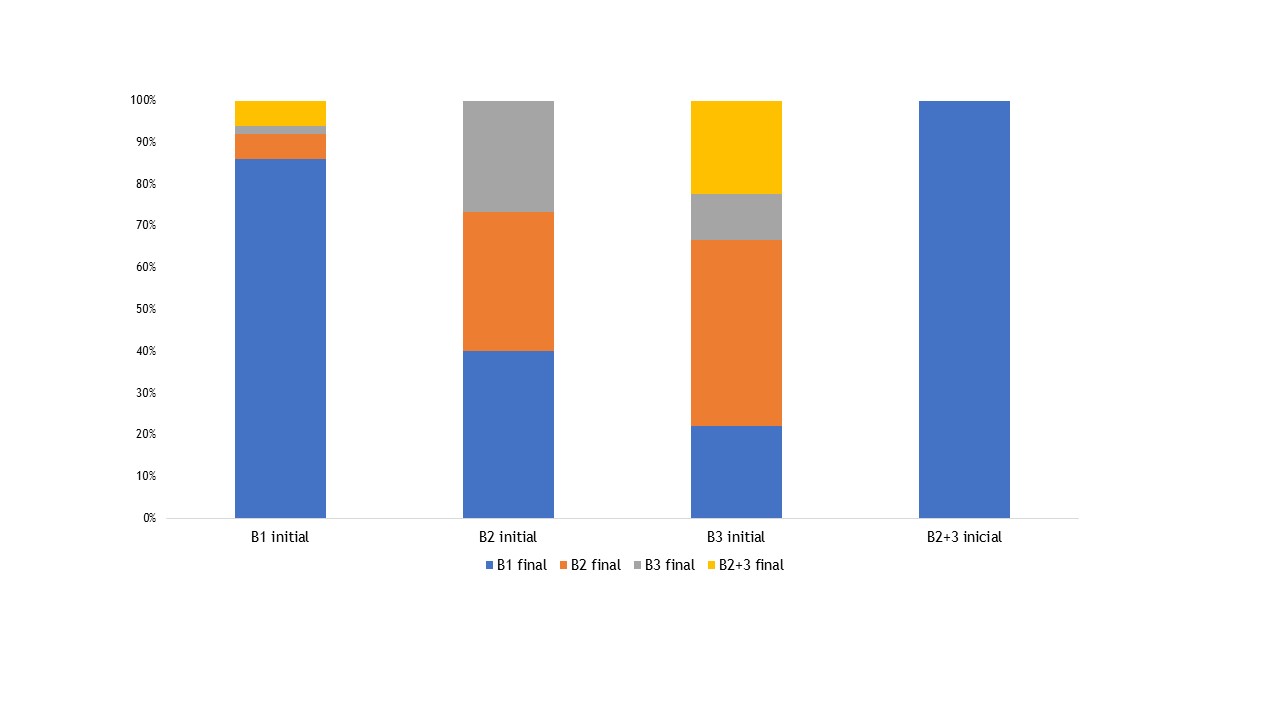P886 Clinical course and therapeutic management 5 years after diagnosis, in a cohort of Spanish patients with Crohn´s disease diagnosed in the 21st century.
De Castro Parga, M.L.(1,2)*;Dagraza, M.(1);Hernández, V.(1,2);García-Morales, N.(1,2);Pineda, J.R.(1,2);Rodriguez-Prada, I.(1,2);
(1)Hospital Alvaro Cunqueiro, Gastroenterology, Vigo, Spain;(2)Galicia Sur Health Research Institute IIS Galicia Sur. SERGAS-UVIGO., Gastroenterology Research Group, Vigo, Spain;
Background
There are now serious doubts about the validity of the classical understanding of the natural history of Crohn´s disease (CD), as it is mainly based on retrospective studies that used old phenotypic classifications and that were carried out in a period of time when there were no biological drugs and little use of immunosuppressants. We aimed to evaluate the natural disease course 5 years after diagnosis of a cohort of CD patients diagnosed in the 21 st century in the North-West of Spain,
Methods
We performed an epidemiological, descriptive, prospective, incident cohort, population-based study. Patients diagnosed with Crohn's disease between 2010 and 2011 in Vigo healthcare area, belonging to the Epi-IBD study (formerly EpiCom) were followed up until December 31, 2016. Their electronic medical records were reviewed, and changes in location and behaviour CD phenotypic patterns, treatments received, as well as the presence of outbreaks with and without hospitalisation and the need for surgery were recorded.
Results
Between 2010 and 2011, 91 patients were diagnosed with CD, but only 75 of them were followed up until 2016. At 5 years, 20% CD patients had changed location and 34.7% their behaviour. Patients with ileal L1 or colonic L2 involvement at diagnosis maintained initial CD location more frequently (94.3% and 82.4%, respectively), but 31.6% ileocolonic L3 decreased location to L1 (15.8%) or L2 (15.8%) (p<0.05). (Figure 1). Even more, patterns B3 at diagnosis greatly modified during follow-up: 22.2% changed to B1, 44.4% to B2 and 22.2% to B2-B3 (p<0.05 for B1 and B2). (Figure 2 ). Initial location L1 was associated with stenosing pattern at 5 years follow-up (p<0.05), and both phenotypes (L1 and B2) with need for surgery (p<0.05).
Five years after diagnosis 54.7% of CD patients had received 5-ASA, 64% local corticosteroids, 74.7% systemic corticosteroids, 77.3% immunosuppressants, 33.3% biologics, and 20% surgery. At that time 48% had suffered an outbreak and 49.3% needed to be hospitalized. There were differences between the initial phenotypic pattern and use of biologics in the first year of follow up (55.6% of patients with B3 (p<0.05 compared to B1 and B2) and 100% B2-B3 required this therapy compared to 20% of B2 and 18% B1, with no differences at 5 years.

Conclusion
Natural history of Crohn´s disease in the 2010-2011 Vigo cohort showed an improvement in their behaviour and location 5.years after diagnosis, with a decrease in penetrating behaviour and ileocolonic location. This fact could be explained by and early and high use of biologics drugs in the more aggressive phenotypes.


